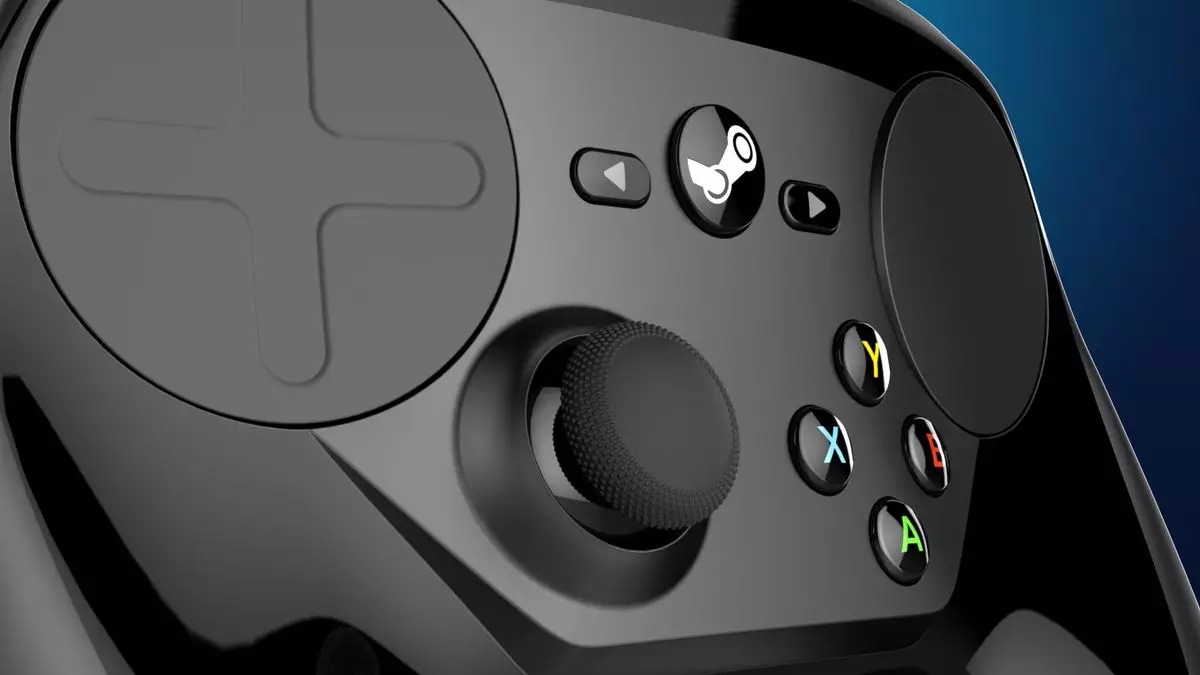The original Steam Controller, launched by Valve in 2015 and discontinued four years later, is a device that continues to evoke mixed feelings among gamers and industry critics alike. With its unique feature set, it attracted a dedicated fanbase that swore by its capability to facilitate a PC gaming experience from the comfort of a couch. Yet, it simultaneously faced harsh critique for its build quality and complicated user interface. Now, as rumors circulate about a potential successor—referred to as Steam Controller 2 or codename “Ibex”—one must ponder what this means for the future of Valve’s hardware endeavors and the gaming landscape at large.
Lessons from the Original Steam Controller
The first iteration of the Steam Controller garnered attention for its unconventional design, including two trackpads, gyro sensors, and customizable back paddles. Many proponents argued that these features made the controller ideal for titles that traditionally required a mouse and keyboard setup. If you invested time into customizing your controller settings, it could provide a distinct advantage in specific gaming genres, especially first-person shooters or real-time strategy games. However, this undoubtedly came with a steep learning curve that turned many potential users away.
Moreover, the lack of pre-defined profiles didn’t help its case. New users found themselves sifting through community-shared configurations, which were often hit-or-miss in effectiveness. Inevitably, this complexity undermined the controller’s user-friendliness, particularly against traditional gamepad competitors that offered simpler plug-and-play experiences. Combining this usability issue with the initial device’s questionable build quality raises the question of whether Valve is prepared to incorporate these learnings into the development of the Steam Controller 2.
The gaming industry has shown dramatic shifts since the original Steam Controller’s launch. The past few years have seen a resurgence in couch gaming, albeit under different circumstances than Valve imagined with its Steam Machines—a highly ambitious yet poorly timed project. Modern gamers often utilize remote play capabilities, allowing them to seamlessly stream PC games to their living room screens. Coupling this with an increase in versatile devices, such as handheld consoles and smart TVs, paves the way for another attempt at a console-focused controller.
If the rumors of a second-gen controller are indeed accurate, it is critical for Valve to capitalize on the current gaming ecosystem. The company must design a device that appeals not only to the hardcore PC user but also to casual players looking for a more accessible yet high-quality gaming accessory. Initial speculation indicates that Valve may explore options such as a hybrid between a traditional gamepad and the original controller’s unique features—perhaps integrating trackpads alongside thumbsticks for versatile use.
Anticipation and Community Response
As news of the Steam Controller 2 gains traction, reactions from the gaming community range from excitement to skepticism. Many remain wary of Valve’s ability to innovate in an increasingly competitive market filled with established gaming hardware providers. Expectant players are cautiously optimistic about what a new controller could mean for their gaming setup; if successful, Valve may very well find renewed success where its past efforts faltered.
In a world where expectations are higher than ever, Valve must also ensure that it does not simply rehash its previous design. If the Steam Controller 2 mirrors the original too closely, critics likely will not hold back in voicing their discontent. Instead, it must deliver solid build quality, an intuitive interface, and compatibility with the significant range of games available on Steam.
Looking forward, the challenges that lay ahead for the Steam Controller 2 are both daunting and exhilarating. The market now includes competitors like the Xbox Elite Controller and the PlayStation DualSense, both of which bring their own unique selling points. Given Valve’s historical penchant for creative hardware innovations, there remains a glimmer of hope that the company can dazzle consumers and critics alike once more.
Ultimately, whatever features the second iteration includes will be crucial to its acceptance in the gaming world. A cautious nod to user feedback, alongside potential reconfiguration of its legacy design, could redefine the Steam Controller’s place in the modern gaming landscape. The success of this endeavor will hinge not just on nostalgia for the original, but rather on a well-executed product capable of meeting the expansive demands of today’s diverse gaming audience. As the gaming community awaits more details, the anticipation surrounding the Steam Controller 2 suggests that gaming enthusiasts are ready—for better or worse—for the next in what is shaping up to be a storied legacy of Valve hardware.

